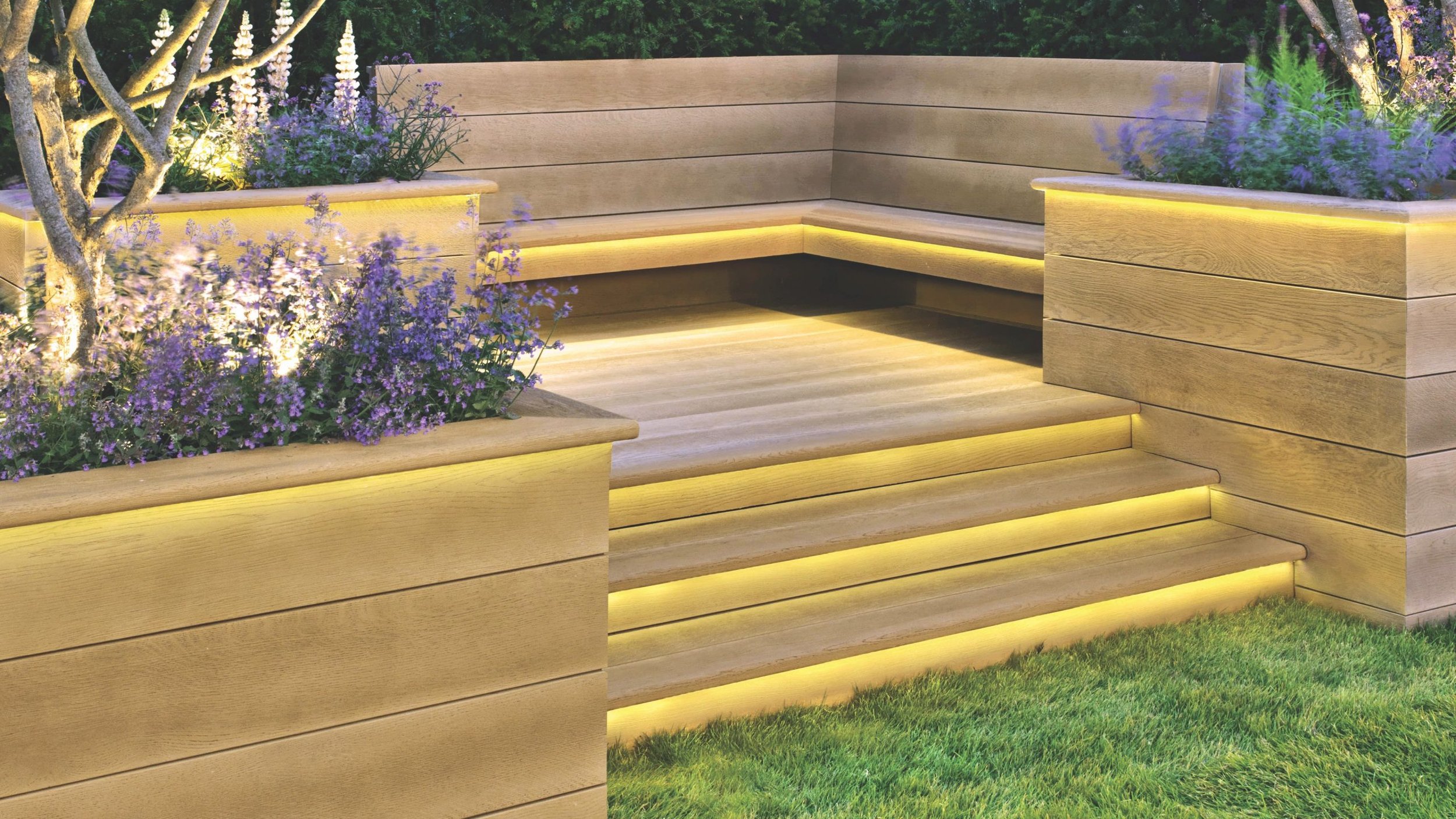Millboard vs. Standard Composite Decking: What Should You Choose?
If you're looking for a low-maintenance, durable, and stylish decking material, you're probably considering composite decking. But with so many different brands and products on the market, it can be tough to know which one is right for you.
One of the most popular composite decking brands is Millboard due to its authenticity, durability, and strength. But is Millboard the right choice for you, or should you opt for a cheaper, standard composite decking for your outdoor space? In this article we’ll take you through the benefits of Millboard and why it’s a cut above the rest.
Image by Millboard
Why choose Millboard composite decking?
Millboard composite decking is known for its authentic wood look and feel, as well as its exceptional durability and low maintenance requirements. It's made from a blend of recycled materials and high-performance polymers, and it's 100% wood-free. This means that Millboard decking is resistant to rotting, warping, and splitting, even in extreme weather conditions.
Millboard decking is also very stain-resistant and easy to clean. Simply wipe up any spills with a damp cloth and mild detergent. Millboard doesn't need to be sealed or painted, and it's even resistant to algae growth, making it the perfect choice for decking areas that are shaded or exposed to moisture.
In addition to its practical benefits, Millboard decking is also incredibly aesthetically pleasing. It's available in a wide range of authentic colours and finishes, so you can find the perfect look for your outdoor space. And because Millboard is made from recycled materials, it's an environmentally friendly choice as well.
Here are some of the key benefits of Millboard composite decking:
Authentic wood look and feel: Millboard decking is moulded from real wood, so it has the same beautiful look and feel as natural hardwood.
Exceptional durability: Millboard decking is resistant to rotting, warping, splitting, and even algae growth.
Low maintenance: Millboard decking doesn't need to be sealed or painted, and it's easy to clean.
Stain-resistant: Millboard decking is resistant to stains from food, drinks, and other substances.
Environmentally friendly: Millboard decking is made from recycled materials.
Other Composite Decking Brands
Other composite decking brands are typically made from a blend of recycled materials and high-performance polymers and importantly often incorporate real wood.
While many composite decking brands have come a long way over the years, the use of wood within their products, despite making them more durable than traditional timber decking, still means they are less durable and long-lasting than Millboard. Further, there is still a reliance on some wood materials in the production of standard composite decking, making them less sustainable than Millboard.
And while we cannot deny that the aesthetic of composite decking brands has also improved over the years, nothing quite compares to Millboard and this is due to the way Millboard is made. Most composite decking is machine-produced using a method called extrusion. This is where the materials are combined and then pushed through a machine that creates the shape of the end product. In contrast, Millboard is hand-moulded from real timber.
There are many composite decking brands on the market and you may find one that suits your needs that is not Millboard. However, if you're looking for the most authentic wood look and feel, as well as a truly luxurious finish that lasts longer than any other, then Millboard is the better choice.
Millboard vs. Other Composite Decking Brands
| Brand | Millboard | Standard Composite Decking |
|---|---|---|
| Material | 100% wood free | Combination of plastic and wood fibres |
| Durability | Featuring a unique Lastane layer, polymer resin and being solid rather than hollow = increased durability | Durable but may warp/rot or deteriorate due to the containment of wood fibres |
| Slip Resistance | Due to the lack of real wood fibres, it is non-porous and therefore resistant to algae growth. This improves the slip resistance. | Good slip resistance due to texture, but is more porous and therefore may see algae growth. This can make it more slippery. |
| Authenticity | Hand-moulded from original timber for a more authentic look and feel | Formed by extrusion and machine-made |
| Cost | Potentially pricer than standard composite decking brands | Varies per brand, but generally is cheaper than Millboard |
So, which composite decking is best?
Ultimately, the best composite decking for you will depend on your individual needs and preferences. If you're looking for a decking material with the most authentic wood look and feel, then Millboard is the best option.
Millboard is also, in our opinion, the most durable, low-maintenance, and stain-resistant composite decking on the market. It also has the most authentic wood look and feel, making it feel incredibly upmarket.
However, Millboard is also a pricier option when it comes to decking and composite decking. If you're on a budget or you're not as concerned about the authentic look, then you may be able to look at other brands.
Ultimately, the decision of which composite decking is right for you is up to you. Weigh the pros and cons of each brand and choose the one that best meets your needs, desires, and budget.
Millboard samples at WLD
Millboard at Walker Landscape & Design
If you're interested in sourcing Millboard composite decking for your next project or you’d like to use Millboard in your own outdoor space, we encourage you to contact Walker Landscape and Design. We are a leading supplier, installer and display centre of Millboard decking in the UK, and we offer a wide range of products and services to meet your needs. All of these are available to view at our showroom in Chester.
We can help you choose the right Millboard decking product for your project. We offer a free consultation, so don't hesitate to contact us today to learn more.



